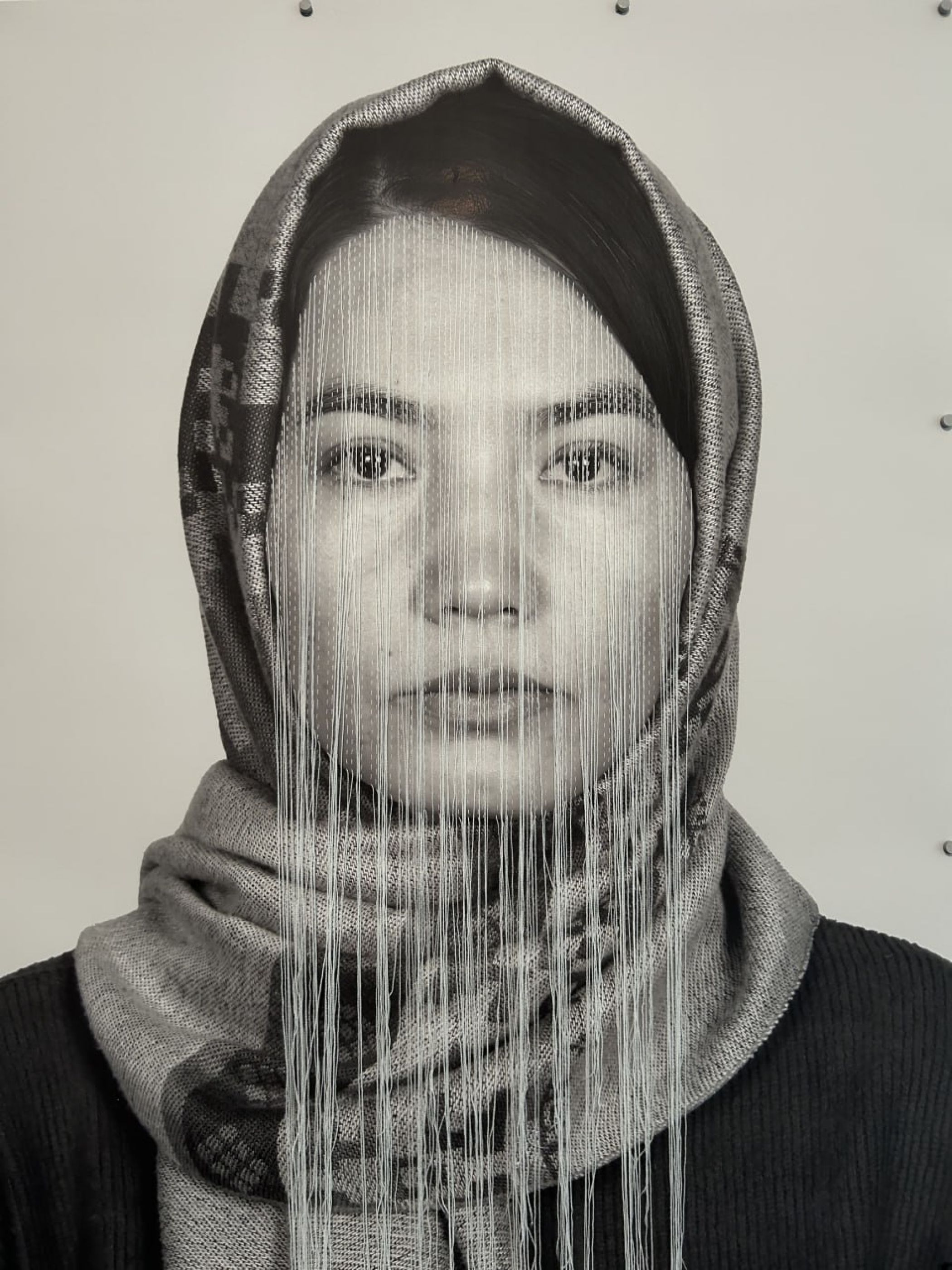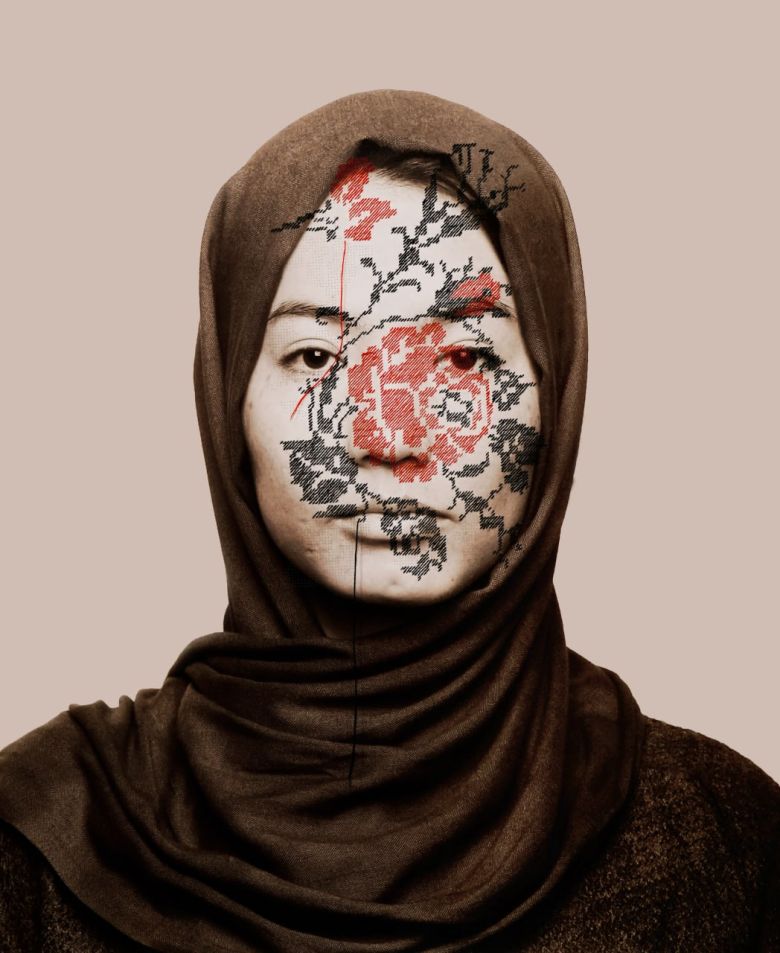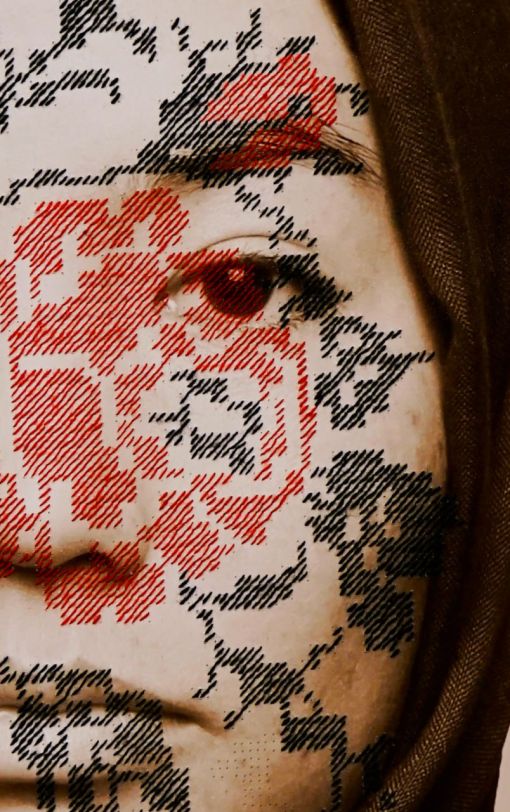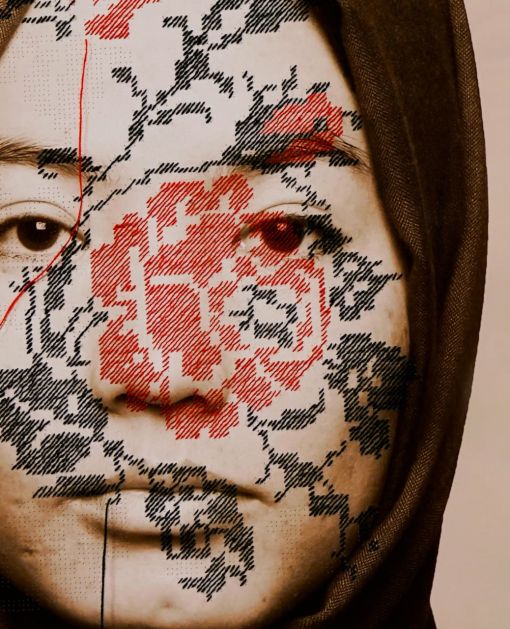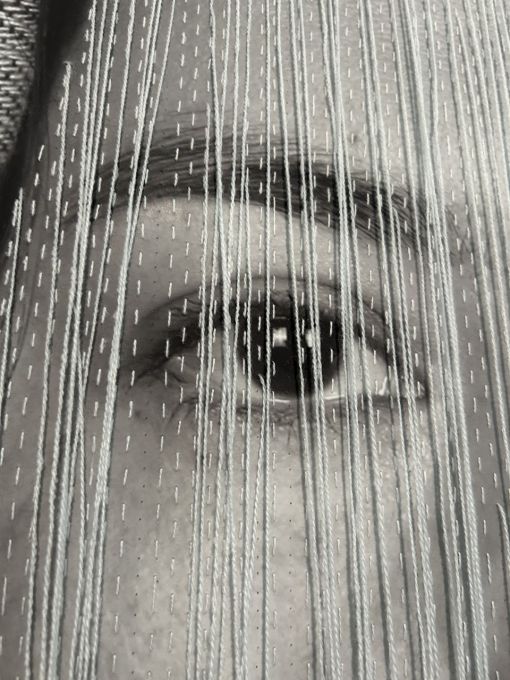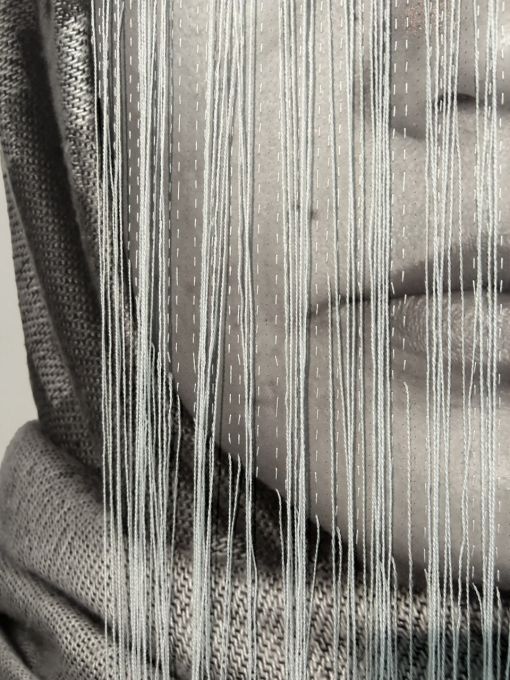Originally from the Hazara, artist Latifa Zafar Attaii situates her artistic practice at the intersection of racial identity and gender discrimination. The Hazaras are an ethnic group in Afghanistan who have been historically and systematically persecuted and massacred by the central ruling power and other ethnic groups in the country. Overshadowed by different ethnic conflicts, decades of war, structural corruption, insecurity, emigration, and other issues facing Afghanistan, the genocide of the Hazara people has not received its due attention. Attaii brings together two elements in her work: a critical perspective with explicit social and political references and her own lived experience, which reflects the experience of many Afghan immigrants.
Attaii uses art as a medium to acknowledge and make visible a shared pain. In her mixed-media works, she often incorporates embroidery, a handicraft traditionally associated with women, which today carries feminist connotations. In Afghanistan, it also signifies social status, lending further complexity to the works. Attaii also uses embroidery to refer to the resistance strategies of Afghan women in response to girls being banned from education. In the midst of the unending cycles of political and social upheaval in contemporary Afghanistan, women — denied the opportunity for formal education — have cultivated alternative skills as pathways to their own empowerment.
One key strategy women have adopted to resist oppression has been the transmission of craft techniques and life skills — usually passed down from mothers to daughters — through unofficial, often intergenerational, women’s networks. Thus, in contemporary Afghanistan, embroidery should not be viewed merely as a traditional handicraft but as a symbol of resistance to social and religious oppression. For Attaii, the repetitive nature of embroidery is tied to traditional beliefs around constructing protective barriers, symbolizing the need for security and protection felt by many Afghans, especially the Hazara community.
Self-Portrait
Attaii’s Self-Portrait series (2017–25) brings social and political dimensions to the traditionally personal genre of the self-portrait. On one level, we are confronted with Attaii, a young Hazara woman. The distinct facial features of the Hazara people make them easily recognizable from other ethnic groups in Afghanistan, rendering the artist’s own face an effective identity document. In her work, a severely marginalized ethnic group is given immediate visibility through the face of this woman artist. Complicating this, under Taliban law, “photographing women and showing women’s pictures in all media is forbidden.” Meanwhile, in the Western media, the faces of “Oriental” women are often hidden behind decorative motifs, patterned headscarves, or burkas — a garment so exoticized in journalistic images that the act of unveiling it in Attaii’s art challenges common visual conventions. The burka, which defines the social identity of half of Afghan society and is reduced to custom and “culture” by outsiders, now disappears and renders visible a face and a body that have been absent and inseen until now. In this way, identity re-emerges through visibility.
My Forbidden Face is a first-hand account by Latifa, an Afghan woman writing under a pseudonym to protect her identity, which testifies to the suffering endured by Afghan women and girls under Taliban rule. She published her account in 2004, after fleeing to Paris where she became a voice for her people. Years later, in 2016, Latifa Zafar Attaii, unaware of her namesake’s memoir, revealed her own face through self-portraits, making herself visible in a work of art for the first time. It seems that the two Latifas, each in her own way, unveil their faces and allow us to witness their emergence — a reminder of the deprivation suffered by Afghan women of the most basic human and social rights.
Latifa Zafar Attaii, “Threads of Resistance,” in mohit.art NOTES #17 (autumn 2025); published on www.mohit.art, October 14, 2025.

